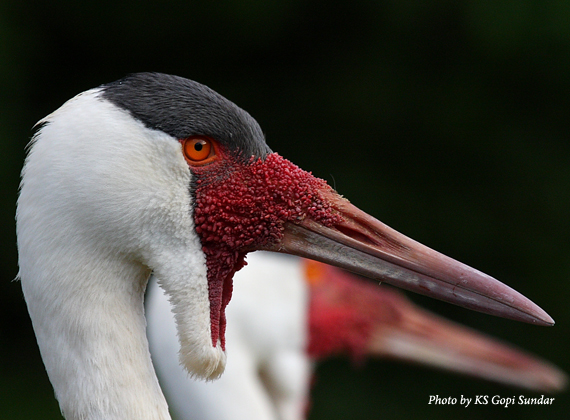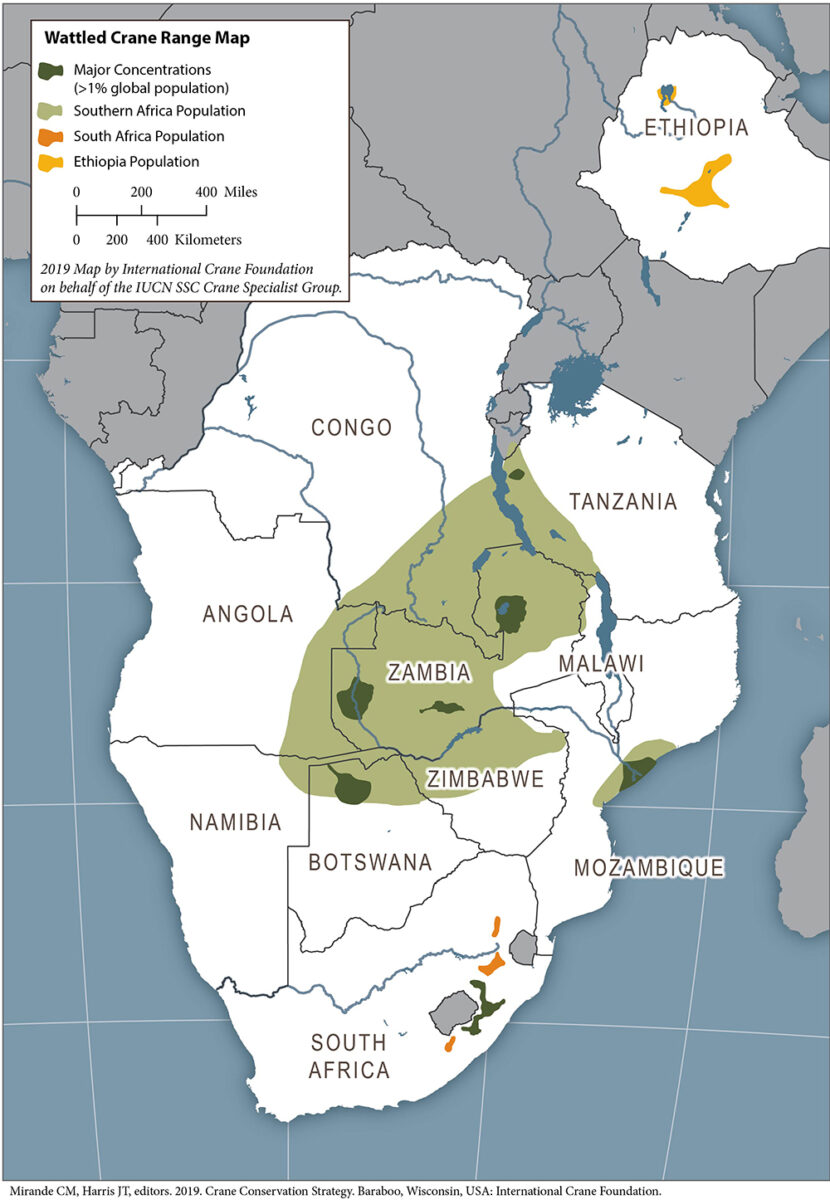
SPECIES: Bugeranus carunculatus
HEIGHT: 172 cm, 6 ft
WEIGHT: 7.8 kg, 14 lbs
POPULATION: >9,600
TREND: Probably decreasing
STATUS: IUCN: VU; Cites Appendix II; CMS II
IDENTIFICATION
Adults – red skin on face, feathered flaps of skin or “wattles” hanging from chin, grey feathered crown, white neck, body plumage various shades of grey; juveniles – tawny body plumage, lack the bare skin on the face and have less prominent wattles.
RANGE
The Wattled Crane occurs in eleven sub-Saharan countries in Africa, including an isolated population in the highlands of Ethiopia. More than half of the world’s Wattled Cranes occur in Zambia. The single largest concentration occurs in the Okavango Delta of Botswana.

DIET
Tubers and rhizomes of submerged sedges (particularly Eleocharis spp.), grain, grass seed and insects.
CALL
Listen to Wattled Crane calls:
![]() Guard Call | A sharp, single call expressing alarm.
Guard Call | A sharp, single call expressing alarm.
THREATS
Habitat loss, especially due to changing hydrology, invasive species, unsustainable exploitation of wetlands, human disturbance, fire and conversion of grasslands.
OUR PLAN
Restoring large floodplains that sustain Wattled Cranes in Southern Africa, and isolated populations in Ethiopia and South Africa. We are:
- Ensuring seasonal water cycles in the Zambezi River basin through changes in the operation of existing dams, design and placement of new dams and sustainable water management policies in the headwaters region. The International Crane Foundation is leading efforts to secure water for key wetlands in the Zambezi River watershed, through controlled release of water from dams developed for hydropower production. These efforts not only help cranes but also provide fisheries, floodplain agriculture and grazing lands for hundreds of thousands of basin villagers.
- Implementing management plans and practices to control invasive species, fire and human disturbance in the Kafue Flats, Bangweulu Swamps and Liuwa Plain of Zambia, and the Zambezi Delta of Mozambique.
- Applying monitoring and management practices that quantify the value of improved water management for Wattled Cranes and other target species, people and broader socio-economic interests.
- Integrating river basin management and climate change adaptation in the region.
Learn more about the Wattle Crane:
